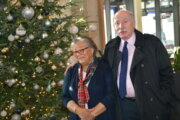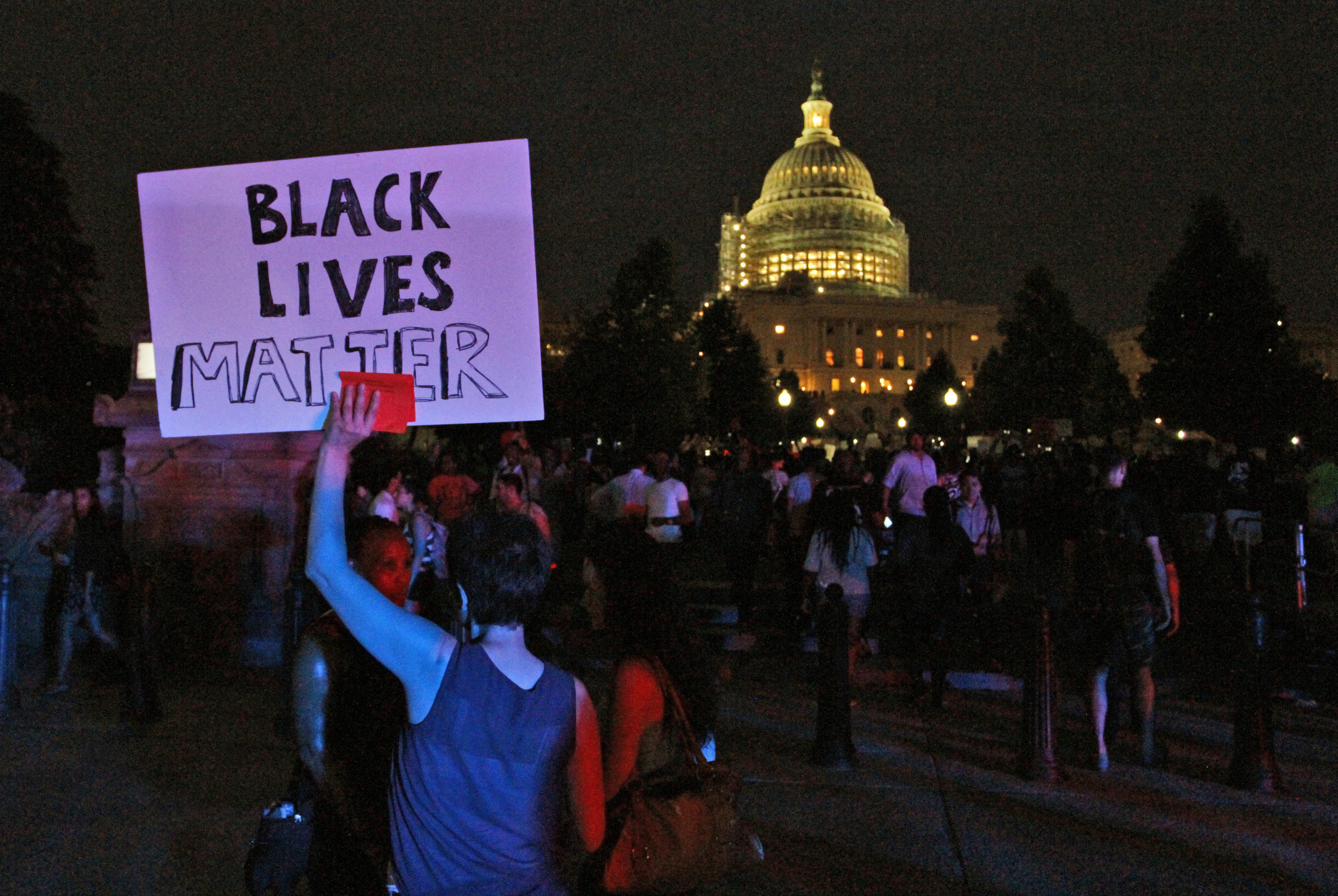
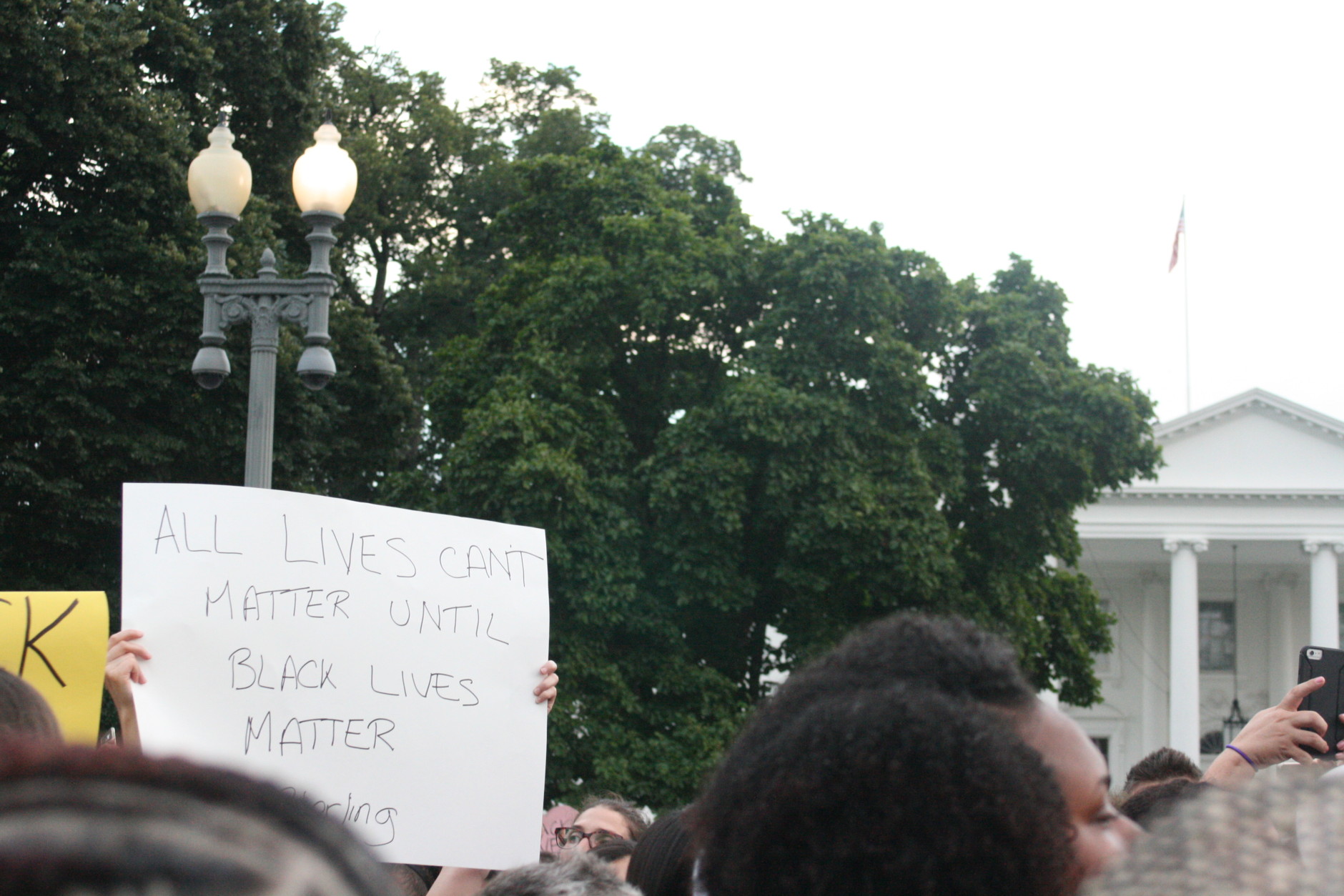
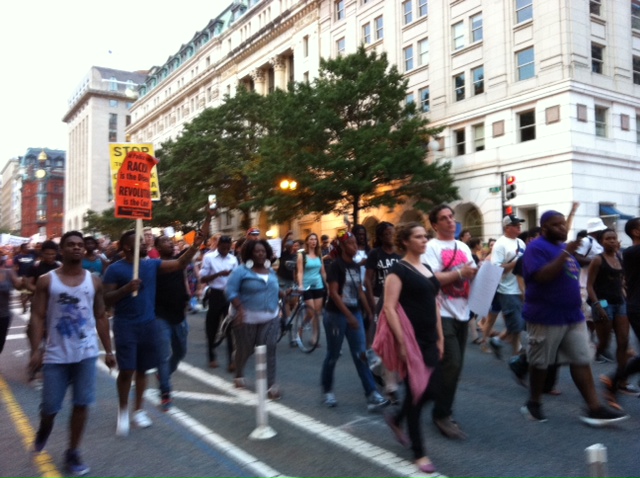
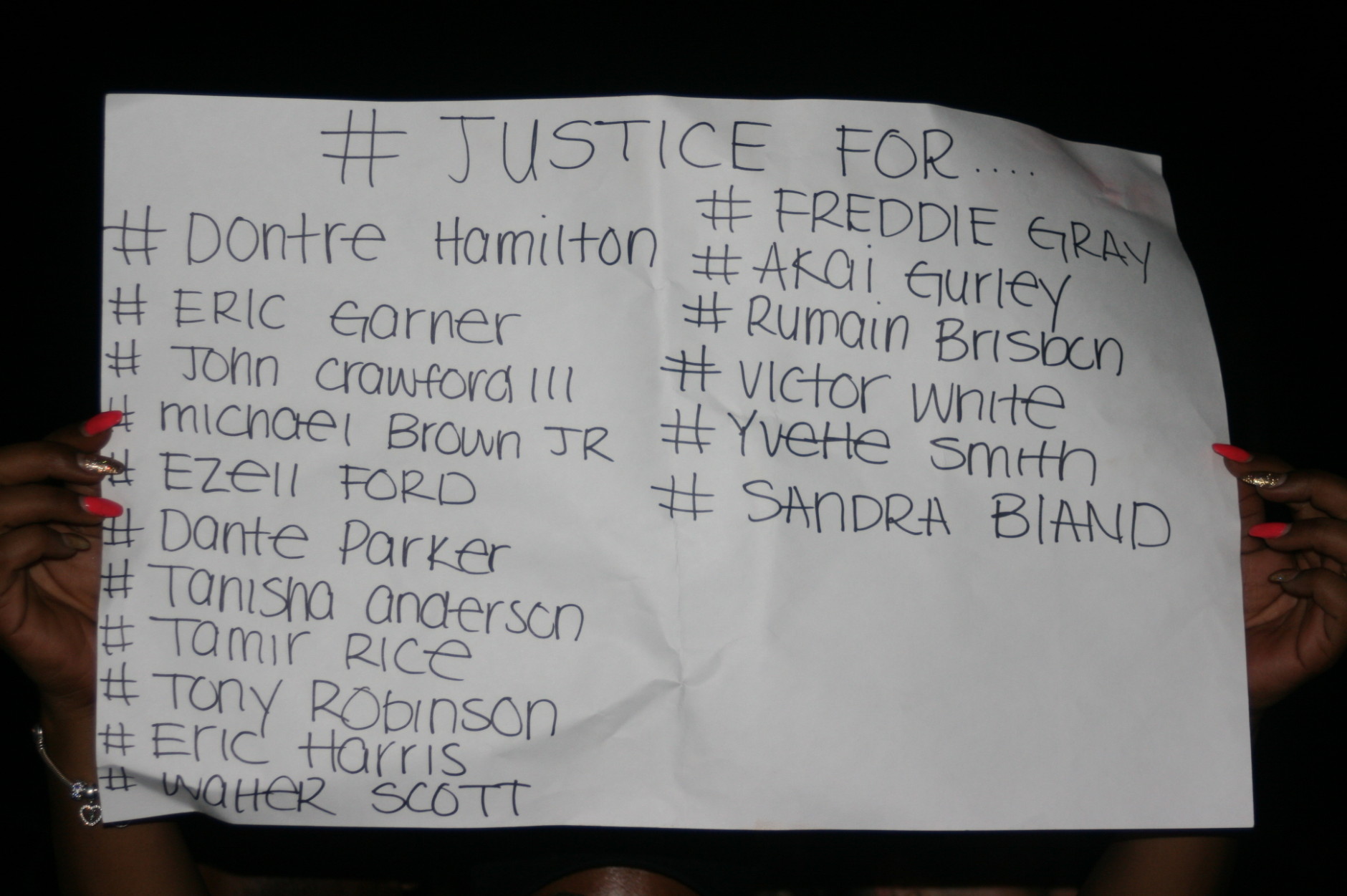
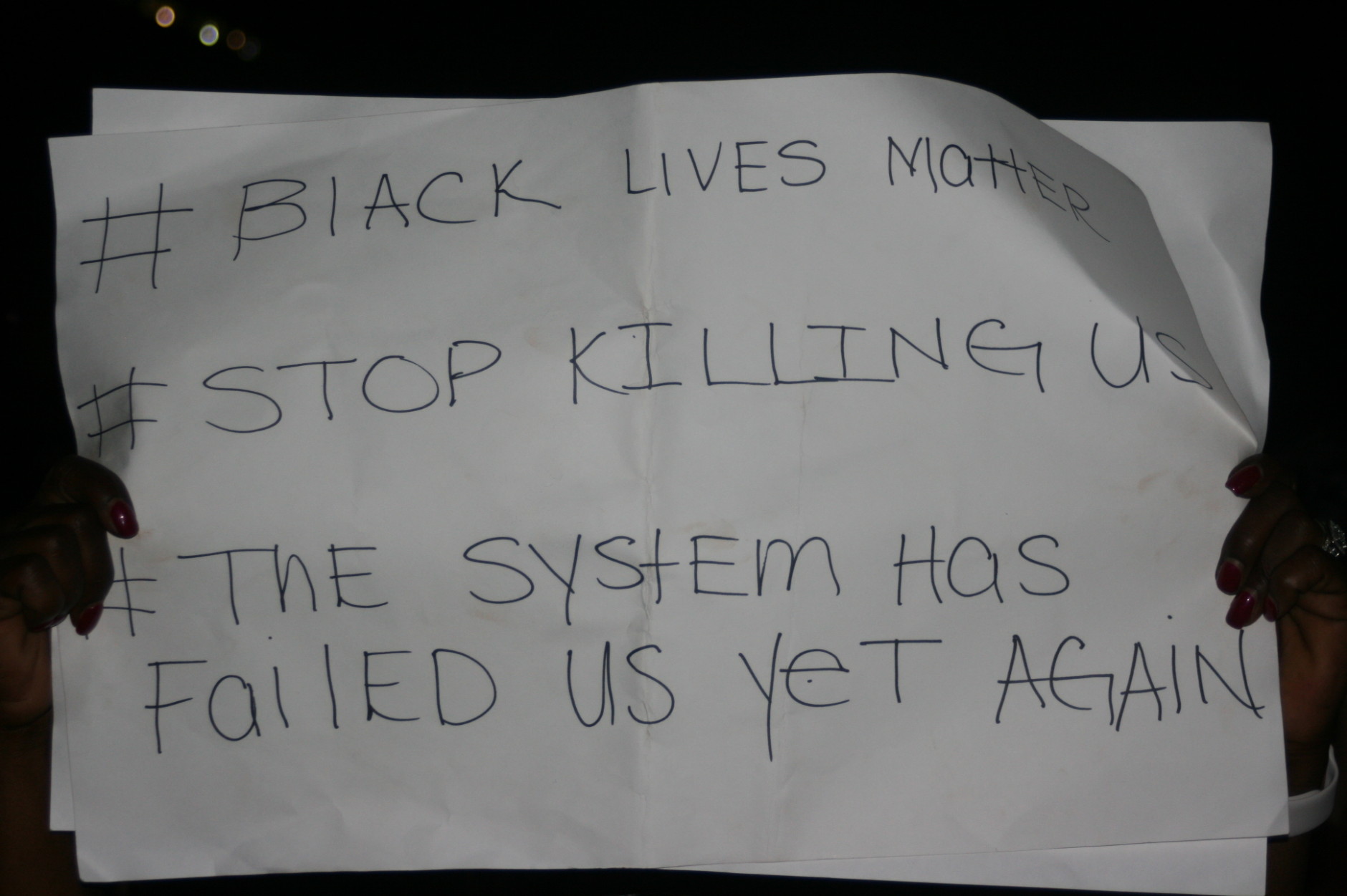
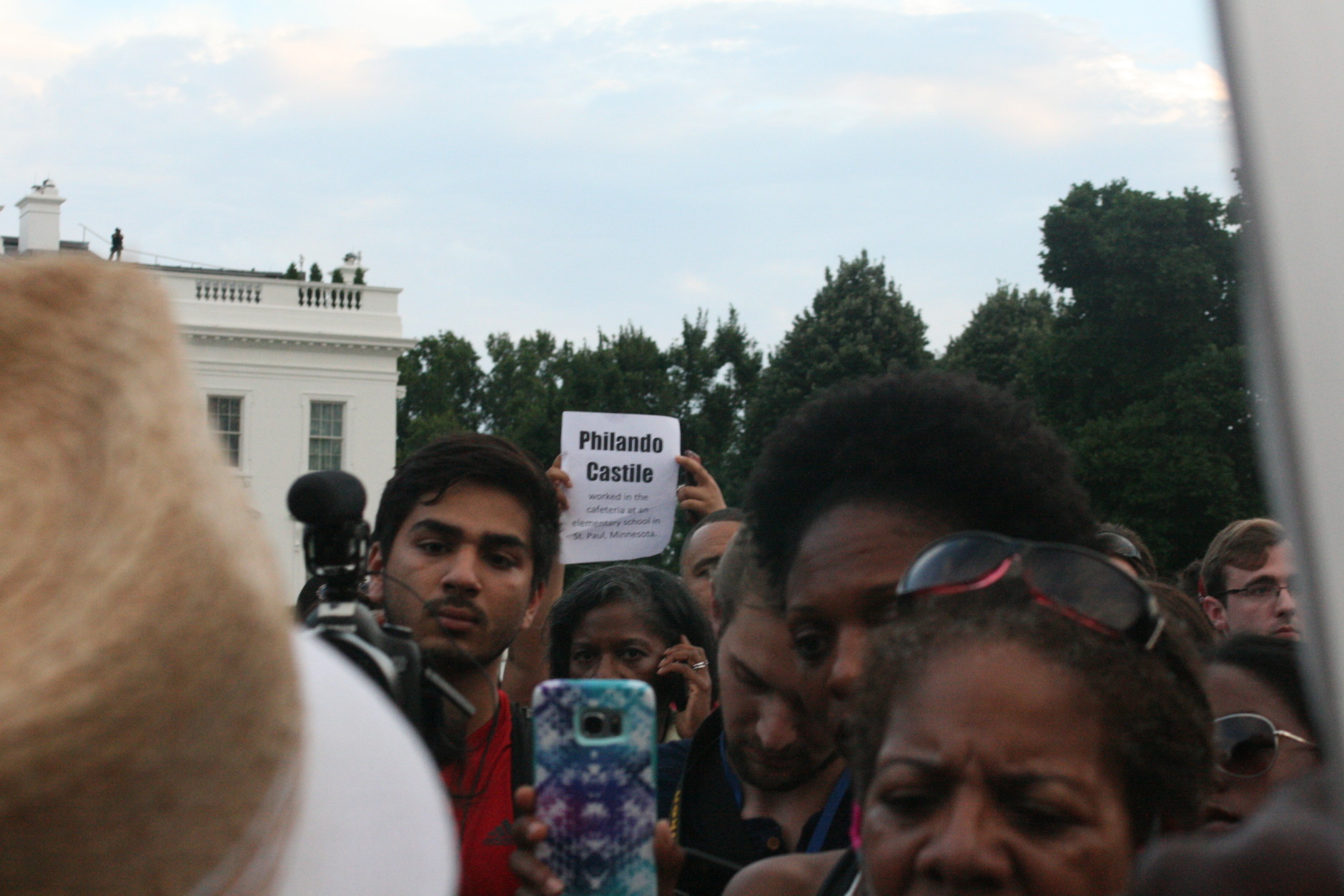
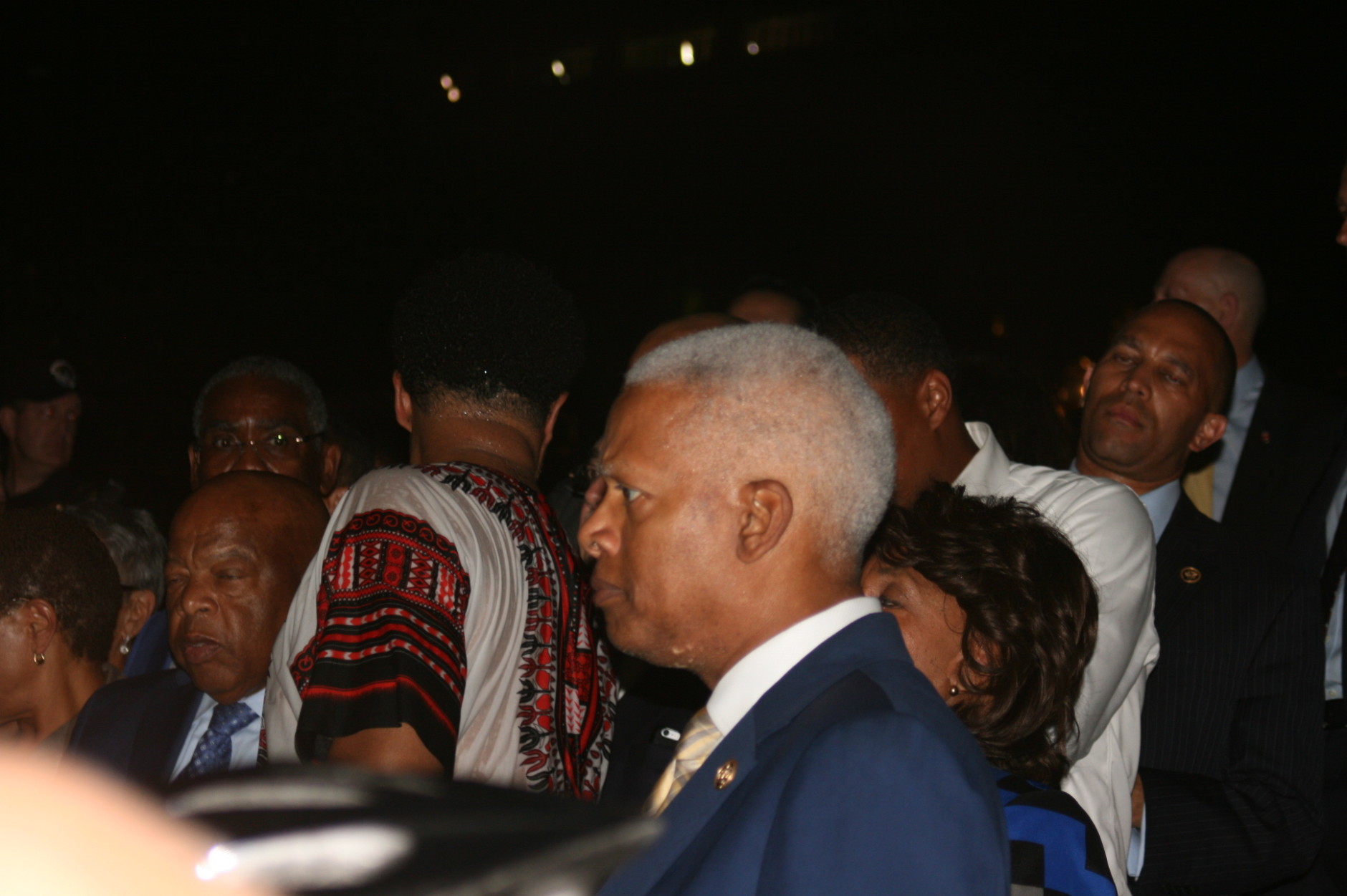
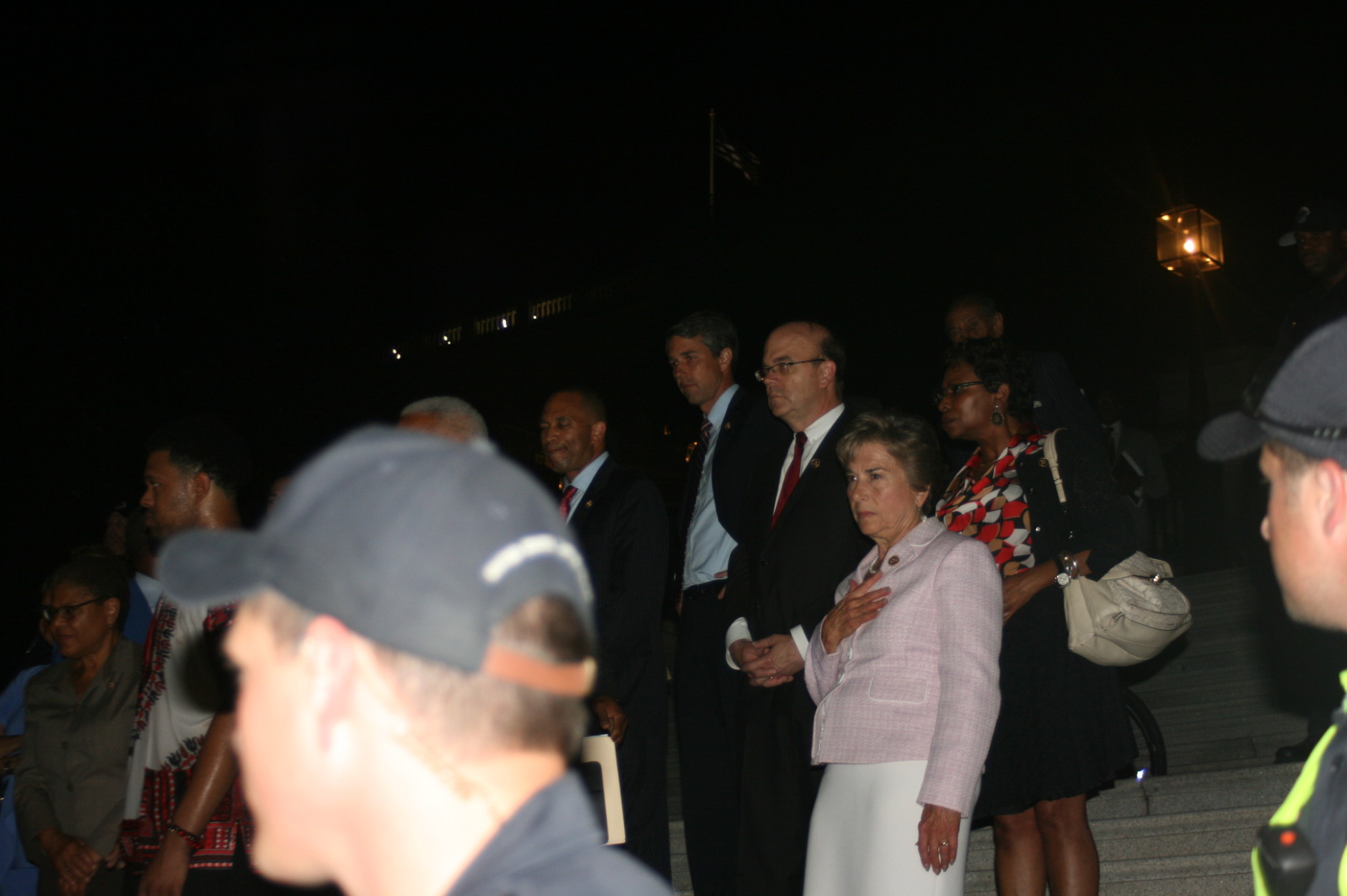
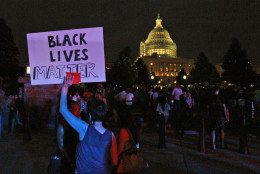
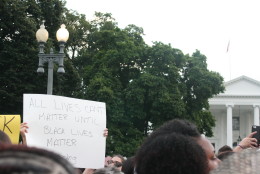
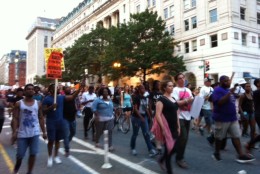
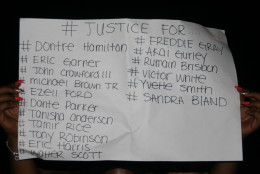
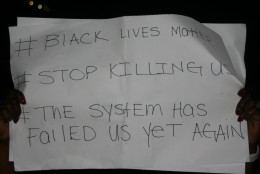
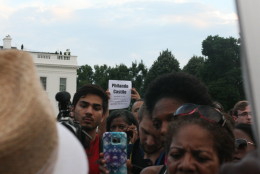
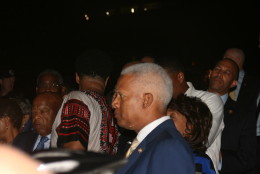
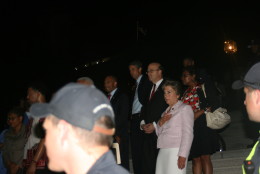
WASHINGTON — The organizers of Thursday night’s protest at the Capitol didn’t expect such a huge turnout when they posted the event on Facebook earlier in the day.
“I thought this was going to be an event with me and 300 to 400 of my friends,” said organizer Robert James.
He estimated that the march from the White House to the Capitol Building ended up attracting about 1,000 people.
James said he woke up enraged Thursday morning after learning about another fatal police-involved shooting, the second in one week.
“The two most recent killings were pretty much the straw that broke the camel’s back.” James said.
He said he’s sat back and watched previous protests, but didn’t attend, but after learning about the shooting of Alton Sterling in Baton Rouge, Louisiana, and Philando Castile in a suburb of Minneapolis, he was moved to act.
It came together in only a few hours, but it turned into a crowd of hundreds gathered at the White House, then a throng of marchers, blocks long, walking and sweating through stifling evening heat to Capitol Hill.
Marches come and go, and some who attended the event said they didn’t know whether Thursday night’s protest will help end police brutality.
“I don’t know that we can wait for guarantees that what we do [will] work [in order] to do something,” Nina Hasen said. “I was moved by moral imperative. I felt it was wrong for me to keep saying how much I hated this on Facebook and other places before trying to figure out how to do something.”
Once the crowd gathered on Capitol Hill, some members of Congress showed solidarity with marchers, including Rep. John Lewis, D-Georgia, who was knee-deep in the Civil Rights movement more than 50 years ago.
“I went to jail 40 times during the ‘60s … beaten and left bloody and unconscious,” Lewis said. “But I never gave up,” he told protesters through a bullhorn. “I never gave up!”
The specific purpose of the protest, as detailed on the event’s Facebook page, was “To push for more stringent testing and psycho-social evaluations of our law enforcers and better training for how to deescalate situations without violence.”
Some protesters chanted for representatives to do their jobs, while others tried to shush folks who kept talking over other lawmakers who were addressing the crowd.
Rep. Beto O’Rourke, D-Texas, stuck around to listen and give advice to marchers who lingered with questions after most of the crowd dispersed for the night.
“I think it means being here and not leaving,” he said. “I think it means those of us who are in Congress being here and not leaving until we get this work done. Until the pressure is too much, until not doing something is too embarrassing or too unacceptable to the people that we represent that we’re shamed into doing the right thing, ultimately.”
Even though protesters were speaking out against police brutality, there was support for police officers.
“I value all law enforcement officers out there in the world who do the job that a lot of us don’t even have the courage to do,” Matthew Midgett told WTOP.
“It’s a hard job to be a cop. But at the same time, it’s a level of integrity that you need … to be a cop. There are a ton of good cops out here in the world. I’m not taking that away from any of the police officers. I just want justice to be served.”
Meantime, event organizer James says he plans to meet with a group of advisers on Friday “to put together a strategy and come up with next steps … that when we implement it, it’s going to work, and you will see some change.”


